7 Best PA Speakers - 2024
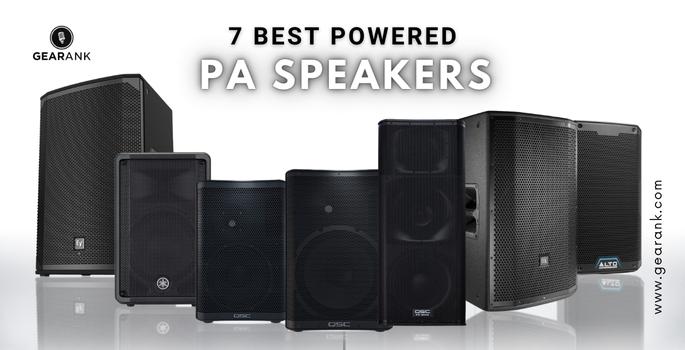
Author & Contributors
Raphael Pulgar
I've been an audio engineer for 20 years specializing in rock and metal recordings. I also play guitar and produce original music for my band and other content creators.
Best Budget PA Speaker
Alto Professional TS408 2000W 8
Cons
- No adjustable tone controls that could manually adjust on the speaker
- EQ profile could be a bit better, but for the price this is a really great speaker
Pros
- Plenty of power and range for average size building
- Durable and sturdy. Easy to pack, haul, hookup and position quickly
- Used for about 6 hours total run time. No issues with overheating or degraded sound quality over time
- Very good bass without a sub. Connecting to the speakers and pairing them was easy
The Alto Professional TS408 is a powered speaker with a 2,000-watt output, an 8-inch woofer, a 1-inch ceramic driver, Bluetooth connectivity, and a 3-channel mixer. It is part of the Truesonic 4 series, designed to provide modern features and technology for stage-ready performance.
The TS408 is an excellent choice for musicians, DJs, and sound engineers due to its many advantages. It offers a powerful and clear sound that can easily fill up a medium-sized venue, thanks to its frequency response of 50 Hz to 20 kHz and a maximum SPL of 128 dB12. Users appreciate the speaker's excellent clarity, punchy bass, and crisp vocals. Additionally, it has a lightweight and compact design that makes it easy to transport and set up, weighs only 23.6 lbs., and features ergonomic handles for carrying. The speaker is also durable and sturdy, with a rugged wood cabinet that protects it from damage during transport and use. It can be used vertically or horizontally as a main speaker, floor monitor, or side fill. Furthermore, it has a built-in fan that keeps it cool and prevents overheating, allowing it to handle long hours of use without any sound quality or performance issues.
The TS408 offers excellent bass without a subwoofer, thanks to its 15-inch woofer that produces deep and punchy bass tones that can handle a wide range of music genres and applications. Users say that the speaker has excellent bass without a subwoofer. Bluetooth connectivity allows users to control the speaker's settings via a dedicated app wirelessly, adjusting the EQ, delay, crossover, and other parameters from their tablet or smartphone. Additionally, it has True Wireless Bluetooth linking capabilities, which enable users to pair two speakers together for stereo sound.
However, the TS408 also has some cons that users should know. It does not have any knobs or buttons that allow users to manually adjust the tone of the speaker on the unit itself, and users have to use the app or the 3-channel mixer to tweak the sound. Some may find this inconvenient or limiting, especially if they cannot access the app or the mixer. The EQ profile could also be better, as it lacks some warmth and presence in the midrange. The speaker may sound harsh or tinny at high volumes.
Overall, the Alto Professional TS408 is a versatile and reliable speaker that offers many features and power for the money. It combines the legendary Alto sound quality with the latest technology and features to give users a great-sounding and easy-to-use speaker. It is ideal for musicians, DJs, and sound engineers who need a speaker that can handle any gig and impress any crowd. The TS408 is a speaker that users can trust and enjoy.
Specifications
- LF Driver: 10" Cone, 2" Voice Coil Ferrite Magnet
- HF Driver: 1" Throat Compression
- Amplifier: Bi-amplified Class D
- Output Power Peak: 700W (500W LF, 200W HF)
- Output Power Continuous: 325W (260W LF, 65W HF)
- Frequency Response: 55Hz-20kHz (-10dB)
- Maximum Peak SPL: 129dB
- Crossover Frequency: 2.1kHz
- Enclosure: Plastic
- Mounting: Pole, Floor, Wedge
- Inputs: 1 x XLR/TRS Combo (Mic/Line) , 1 x XLR/TRS Combo (line only), 1 x Stereo
- Outputs: 1 x XLR
- Controls: Power Switch, 3 x Level Knobs, Mic/Line Switch, D-Contour (FOH, Off, Monitor), HPF Switch (120Hz, 100Hz, Off)
- Dimensions: 19.4" x 12.1" x 11.4"
- Weight: 23.2 lbs.
The Best Active PA Speakers under $500
Yamaha DBR10 - 10" - 700W
Cons
- A bit boomy
- Carrying handle could be better
Pros
- Lightweight speaker, yet very powerful
- Versatile input/output options
- Able to fill a medium-size room
For a powered speaker that weighs under 25 pounds, the Yamaha DBR10 is one loud PA speaker, putting out a massive 129 SPL with good clarity and at an agreeable price.
With a 10" main speaker, you might expect it would be a bit lacking in the bass department, but it performs reasonably well there, too, with a frequency range down to 55Hz. The combination of portability, power, and price makes this a compelling option, and is why it's been so popular and well-regarded since its release in 2014.
And it's very versatile. I have used the DBR10 as an 'FRFR' (Full Range Full Response) amp with guitar modeling, a PA / FOH powered speaker, and a stage monitor. It is one of the best powered speaker to pair with guitar processors.
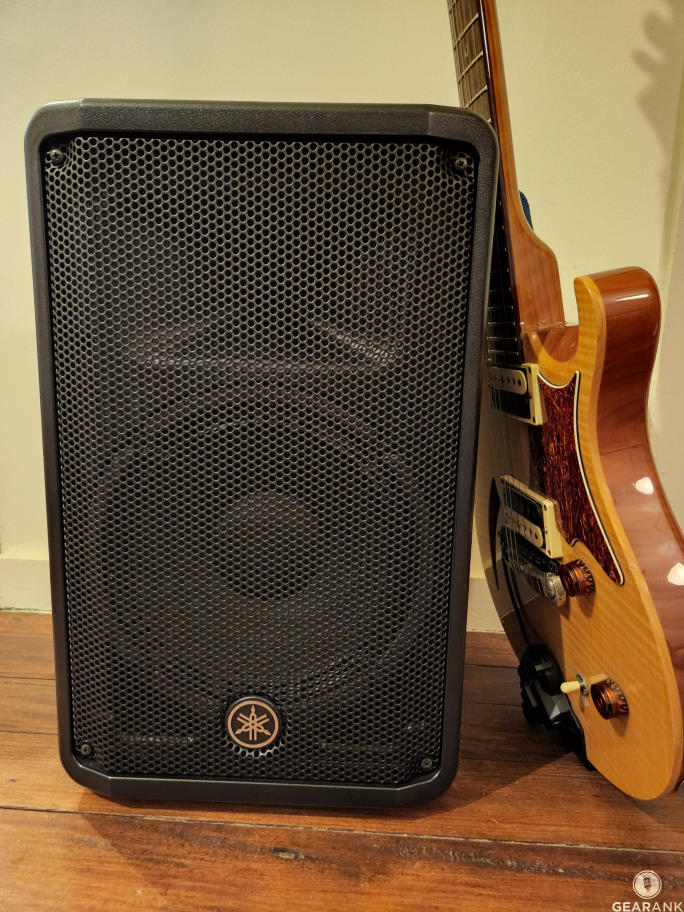
Yamaha DBR10 with a PRS SE Custom Semihollow to give you an idea of the size.
This powered PA speaker has a mixer and two channels, each with an XLR/TRS combo input and volume controls, but keep in mind that only one of the channels can accept a mic-level input (switchable between Mic/Line).
The second channel also has stereo RCA phono connectors for adding program music. I can confirm that you can use these simultaneously as the line input. There are better ways to do it, but if you can balance the volumes of these inputs, you could call it a 3-channel mixer.

Yamaha DBR10 Rear Mixer Panel
As standalone FOH speakers, they work well in smaller venues and medium-sized venues for styles that aren't loud or bass-heavy. Their sound is best described as clean, loud, and surprisingly full. They are viable concert speakers.
They provide reasonable bass for many styles, but if you want some real 'thump' or are in a larger venue, you'll want to pair them with the best PA subwoofer. The DBR10 has an excellent reputation for combining well with subwoofers, and the HPF switch works well for this purpose.
Although others say that this powered speaker is easy to scratch, I've only experienced a few minor ones. It's a good idea to at least get a 'Speaker Tote Bag' for a 10" speaker enclosure like this one made by Gator to keep those classy looks. That particular bag has worked well for me.
The Yamaha DBR series has been around since 2014 when they brought some of the DSP magic from their higher-priced DXR series to this more affordable range, and they've been quite popular and well-regarded ever since.
This fantastic, affordable, lightweight powered speaker sounds great and offers excellent versatility. It looks good and has been a reliable workhorse for many (including me), backed by Yamaha's 7 year warranty.
It's suitable for use everywhere from practice at home, on stage as a monitor or an instrument amp, as main powered speakers for smaller venues, or coupled with subwoofers in larger venues. I find it to be one of the best pa speakers when it comes to versatility and portability.
The power at such a light weight is the standout feature, making it suitable for a broader range of situations. There may be bigger, better, more expensive powered speakers out there, but at this weight, the DBR10 is in a class of its own.
This is one of the best PA speakers for those who need something portable.
Specifications
- LF Driver: 10" Cone, 2" Voice Coil Ferrite Magnet
- HF Driver: 1" Throat Compression
- Amplifier: Bi-amplified Class D
- Output Power Peak: 700W (500W LF, 200W HF)
- Output Power Continuous: 325W (260W LF, 65W HF)
- Frequency Response: 55Hz-20kHz (-10dB)
- Maximum Peak SPL: 129dB
- Crossover Frequency: 2.1kHz
- Enclosure: Plastic
- Mounting: Pole, Floor, Wedge
- Inputs: 1 x XLR/TRS Combo (Mic/Line) , 1 x XLR/TRS Combo (line only), 1 x Stereo
- Outputs: 1 x XLR
- Controls: Power Switch, 3 x Level Knobs, Mic/Line Switch, D-Contour (FOH, Off, Monitor), HPF Switch (120Hz, 100Hz, Off)
- Dimensions: 19.4" x 12.1" x 11.4"
- Weight: 23.2 lbs.
| Website | Source | *Rating Value |
| Gearank | Daniel Barnett | 98/100 |
| Sound On Sound | Paul White | 98/100 |
| YouTube | Gear It First | 96/100 |
QSC CP8 - 8" - 1000W
Cons
- A bit lacking on the bottom end - see the CP12 for more bass
Pros
- Highly versatile - works in all genres
- Also works brilliantly as both FOH and a Stage Monitor - at publication time is was the Highest Rated Powered Stage Monitor Under $500
- Pairs well with most subs - great with the QSC KS118
- Very solid build
QSC is a brand known for premium sound and build quality. Their speakers are widely considered among the best powered speakers for PA systems.
The CP8 lets you experience its brand of quality in a compact and affordably priced package.
QSC's renowned DSP lets you pick between presets for various applications and venues for ease of use.
Despite its smaller 8" LF driver compared to most in this price range, the bass is present enough to have a full-range sound. The selectable contour with bass roll-off makes it ideal for use with subwoofers.
Sound output is surprisingly loud for an 8" active speaker and it has a nice vibrant sound and crispy sparkle. But it does lack a little on the bottom end. But that's not a problem because it pairs nicely with sub-woofers, so for those occasions where you need to go deeper, you can. When properly implemented the CP8 gives you great sound quality and incredible clarity.
If you want to avoid dealing with subs, consider getting the CP12 instead, which, although having identical amplifiers, is noticeably louder at the bottom end.
The polypropylene enclosure is solid; in fact, I expect them to be still working just fine years from now, and it seems QSC does, too, which is probably why they provide such a long-lasting warranty, but don't forget to register with QSC straight away so you get the extra 5 years added on.
The CP8 is a great entry point into QSC's premium pro audio sound reinforcement brand. If versatility and projection are your priorities at this price point, the QSC CP8 is tough to beat.
Specifications
- LF Driver: 8"
- HF Driver: 1.4" Compression Driver
- Amplifier: Class-D
- Output Power Peak: 1000W (800W LF + 200W HF)
- Frequency Response: 56Hz-20kHz (-6dB)
- Maximum Peak SPL: 124 dB SPL @ 1m
- Enclosure: Polypropylene
- Mounting: 35mm Pole Socket, M8 Threaded Insert, Floor Wedge
- Inputs: 1 x XLR-1/4" combo (mic/line), 1 x XLR-1/4" combo (line only), 1 x 1/8" (aux)
- Outputs: 1 x XLR (mix out)
- Controls: Power, 2 x Gain, MIC BOOST Push Switch, 6-way Contour Selection Switch
- Dimensions: 16.2" x 10.7" x 10.1"
- Weight: 25.5 lbs.
| Website | Source | *Rating Value |
| Sound On Sound | Mike Crofts | 94/100 |
| Production Partner | Anselm Goertz | 97/100 |
The Best Active PA Speakers under $1000
QSC CP12 - 12" - 1000W
Cons
- No locking nut to hold the speaker when they are on speaker stands
- Few eq curve options at the back
Pros
- Excellent clarity
- Versatile - good for either FOH or stage monitors
- Good durability
- Portable
- Surprisingly loud
The QSC CP12 is a compact powered loudspeaker designed with portability in mind. It has a peak wattage of 1000 W and a Max SPL of 126 dB, making it loud enough for small venues or medium-sized conference halls.
It also features a built-in 2-channel mixer for single-box operation. This makes it an equally capable floor monitor or keyboard amplifier, in fact many consider it as one of the best stage monitors available. Only one channel can run at mic level gain, and the aux channel gain is shared with line level at input 1.
My experience with these 12 inch PA powered speakers is from a local venue I set up sound for. The speakers can handle a packed small venue with just two units. The versatility allowed the venue to use the same unit for their monitors. Calibration was a breeze, and the volume and clarity were good, even during rock gigs.
If you're looking for a compact but capable speaker with multiple uses like mains, monitors, or instrument amplification, the QSC CP12 is a good, versatile choice.
I recommend these for small to medium venues that need a clear-sounding speaker with good headroom and can handle more aggressive styles of vocals.
Specifications
- LF Driver: 12"
- HF Driver: 1.4"
- Amplifier: Class D Amplifier
- Output Power Peak: 1000 W peak, 800 W (LF), 200 W (HF)
- Frequency Response: 47 - 20 kHz(-10dB)
- Maximum Peak SPL: 126 dB
- Enclosure: Polypropylene
- Mounting: Wedge, Pole, Floor, Yoke Suspension
- Inputs: 1 x XLR-1/4" combo (mic/line), 1 x XLR-1/4" combo (line only), 1 x 1/8" (aux)
- Outputs: 1 x XLR (mix out)
- Controls: Power, 2 x Gain, MIC BOOST Push Switch, 6-way Contour Selection Switch
- Dimensions: 20.3" x 13.8" x 12.7"
- Weight: 30.3 lb.
| Website | Source | *Rating Value |
| Sound On Sound | Mike Crofts | 94/100 |
| Music Connection | Barry Rudolph | 92/100 |
| Church Production | Loren Alldrin | 95/100 |
Electro-Voice EKX-15P - 15"
Cons
- Fan can get noisy
- Power cable a bit flimsy
Pros
- Smooth, high-quality sound
- Great sound and build quality
- Can fill big venues with ease
The EKX-15p was designed to project low frequencies. Pairing a 15" woofer with a 1500W Class D Power amp, The EKX-15p can go loud and distortion-free.
This low frequency reproduction makes it great for DJs and musicians. It's clear enough for speech. It also does a great job of filling larger venues.
Electro Voice opted for a cleverly designed wood cabinet similar to classic speaker designs but with lighter materials to keep weight down.
You can choose between 3 presets: music, live, and club. You also have the option to save five user-programmable presets.
The variable speed fan keeps the speaker from overheating and potential burnouts. It can sense internal temperatures and automatically adjust the fan speed.
It's a simple speaker to set up and works well with different speaker stands and other mounting options.
The power cable may be fragile. This is reflected in other reports by owners but it can be easily replaced with a sturdier one. Another con is the fan. It gets loud at higher speeds.
It's a big speaker with big wattage and a great wooden baffle cabinet. At this price, it's among the best active speakers in terms of value. You can't go wrong with the brand and its reputation for sound AND build quality.
Specifications
- LF Driver: 15"
- HF Driver: 1.5"
- Amplifier: Bi-amplified Class D
- Output Power Peak: 1500W
- Output Power Continuous: Not Specified
- Frequency Response: 55Hz - 18KHz (-3 DB) | 44Hz - 20kHz (-10 DB)
- Maximum Peak SPL: 134 dB
- Crossover Frequency: 1.7 kHz
- Enclosure: 15 mm plywood with EVCoat
- Mounting: Pole
- Inputs: 2 x XLR-1/4" combo, RCA Input
- Outputs: 1 x XLR
- Controls: Master Volume, Input 1, Input 2
- Dimensions: 27" × 17" × 17"
- Weight: 53.9 lbs.
| Website | Source | *Rating Value |
| Sound On Sound | Mike Crofts | 85/100 |
| Pro Sound | Strother Bullins | 94/100 |
The Best Active PA Speakers under $2000
JBL Professional PRX815W
Cons
- Weighs heavy at close to 50lbs
- App has a learning curve
Pros
- Strong bass
- Easy to set up and connect multiple speakers
- Very loud with good headroom
- Great for outdoor gigs
JBL is one of the most popular brands for sound reinforcement, and the speaker model PRX815W is an excellent example of why people love this brand.
This powered speaker offers many features at a reasonable price. It has a 15" woofer, a 1500W amp, and modern features like Wi-Fi compatibility.
With Wi-Fi compatibility, you can use a dedicated app from your tablet or smartphone to wirelessly control the speaker's settings. You can easily adjust the EQ, delay, crossover, and other parameters, giving you more flexibility in tuning your sound to suit your venue and audience.
The speaker also has a DBX limiter that protects the unit from high-volume damage. The limiter ensures that the speaker does not clip or distort even at high SPL levels, so you can turn up the volume without worrying about damaging your speaker or compromising the sound quality.
The JBL Professional PRX815W is a versatile and reliable speaker with powerful and clear sound, making it a great addition to any setup. It can handle a wide range of music genres and applications, whether you need a main speaker, a floor monitor, or a side fill. The speaker is also easy to transport and set up, thanks to its lightweight and durable wood cabinet and ergonomic handles. It also integrates well with the typical audio equipment setup.
Overall, the JBL PRX815W offers excellent value for the money. It combines JBL's legendary sound quality with the latest technology and features to give you a great sounding and easy-to-use speaker. If you are looking for a speaker that can handle any gig and impress any crowd, the JBL PRX815W is an excellent choice.
Specifications
- LF Driver: 15"
- HF Driver: 1.5" Neodymium Compression Driver
- Amplifier:Class D Bi-Amped
- Output Power Peak: 1500W (750W LF + 750W HF)
- Output Power Continuous: Not specified
- Frequency Response: kHz(-10dB)
- Maximum Peak SPL: 50Hz-20khz (-10 dB) dB
- Crossover Frequency: 2 kHz
- Enclosure: Birch/Poplar
- Mounting: Pole, Wedge, Fly
- Inputs: 2 x XLR-1/4" Combo (Mic/Line), 2 x RCA (Stereo)
- Outputs: 1 x XLR (Mix out)
- Controls: 2 x Gain Knobs
- Dimensions: 27.6" x 17.5" x 14.1
- Weight: 47.5 lbs.
QSC KW153 3-way 15" - 2000W
Cons
- Too big and heavy for typical band setups
Pros
- Brilliantly suited to medium to large venue installation
- Very good at all styles of music
- Sounds great at all volumes.
- Excellent sound reproduction/clarity
The KW153 is another of QSC's top rated PA powered speakers, enjoying perfect ratings at almost all major retailers.
This high-output PA powered speaker has a three-way speaker design that can generate serious volume, sporting a 15" LF driver, a 6.6" MF driver, and a 1.75" tweeter.
Unlike the JBL SRX835P this is only bi-amped; however, the crossovers do their job, and there isn't any lack of mid or high-end response; even at high volume, you still get a great deal of detail and nuance.
I'm happy using these 15-inch 3 way powered speakers for any style of music, and I've seen reports of other audio engineers using them for orchestra and classical-style music, which shows just how versatile they are. This is one of the reasons the QSC KW53 is considered the best PA system for outdoor events.
This powered speaker is highly recommended if you want premium quality 3-way 15" house speakers for permanent installation or large venues.
Specifications
- LF Driver: 15" Cone
- MF Driver: 6.5" Mid Range Cone
- HF Driver: 1.75" Titanium Diaphragm Compression
- Amplifier: Bi-amplified Class D
- Output Power Peak: 2000W (1000W LF, 1000W HF)
- Output Power Continuous: 1000W (500W LF, 500W MF/HF)
- Frequency Response: 35 Hz – 18 kHz (-6dB) | 33 Hz – 20 kHz (-10dB)
- Maximum Peak SPL: 134dB
- Crossover Frequency: DSP Controlled
- Enclosure: 15mm Painted Birch Plywood
- Mounting: Pole, Fly
- Inputs: 1 x XLR/TRS Combo (Mic/Line), 1 x XLR/TRS Combo (Line), 2 x RCA
- Outputs: 1 x XLR (Line), 2 x XLR (Direct)
- Controls: Power, Gain A & B, Input Gain (0 dB / 12 dB / 24 dB / 36 dB), LF Mode (Ext Sub /Norm/DEEP), HF Mode (Flat/ Vocal Boost), Front LED (On /Off/Limit)
- Dimensions: 43.1" × 18.5" × 16.8"
- Weight: 87 lbs.
| Website | Source | *Rating Value |
| Audiofanzine | stompboxjon | 100/100 |
Things To Consider Before Buying Powered PA Speakers
-
The speaker cone size refers to the size of the LF (Low Frequency) Driver - AKA Woofer. Generally, smaller woofers tend to emphasize the mids, while bigger ones offer more bass response. Compact 8" loudspeakers work particularly well with sound sources that are not bass-heavy, like a simple vocal with acoustic guitar setup.
You'll need bigger speaker sizes for deep bass, especially if you're plugging in bass-heavy instruments into the signal chain, like keyboards, bass guitars, and drums. 10" to 12" PA speakers should be enough for most small group/band settings. The 12-inch powered speaker is the go-to size for most live performance venues.
On the other hand, DJs and Electronic Music enthusiasts prefer bigger 15" speakers for the extra low-end they provide. If you want more low-end, consider getting a PA subwoofer.
-
Since powered PA speakers have built-in amplifiers, you don't have to worry about properly matching the speaker to the amp like you would if you opted for passive speakers. This is an important distinction when deciding between powered vs passive speakers. Still, the best passive pa speakers have their own advantages, like the ability to mix and match drivers with amps.
The focus is on output power, a numerical representation of the headroom and projection capabilities of the built-in amplifier and speaker combination.
Manufacturers and retailers commonly list two types of power output ratings: Continuous (RMS) and Peak (Dynamic).
Continuous (sometimes interchanged with RMS) is a better representation of how powerful a speaker is because it specifies the wattage in which it can operate safely for long periods.
Peak (sometimes interchanged with Dynamic) refers to short volume/power bursts that speakers can handle. It points to the upper limit of what speakers can do and, as such, is not a good standard to use. 200 to 500 Watts of Continuous power should be enough for most small venues, while upwards of 500W are meant for medium to large venues.
Max SPL ((Sound Pressure Level) is also essential when matching speakers with venue size. The general rule is that the higher the max SPL rating, the more space the speaker covers. With these information, you can implement multiple speakers strategically to cover larger venues.
-
The integrated power amplifier inside powered speakers adds weight and some bulk; as such, they are generally heavier than passive speakers.. So it's important to consider weight and portability features, especially when you change venues regularly. Important speaker features like handle location and size should be considered; you want to avoid buying a great sounding speaker that you can't carry around, or you can't fit inside your vehicle.
While self-powered speakers are heavy, your overall rig will be lighter because you don't have standalone amplifiers. Considering the cables and Speaker Connector Types that you need is also important when using portable powered PA speakers, especially when connecting to additional speaker systems.
- Many powered speakers have built-in DSP (Digital Signal Processing), providing various advantages, including smart limiters to protect the speaker from overload/clipping. Some even use DSP to tweak the sound to match the acoustics of rooms, for the best sound quality and versatile placements. While it's better to do EQ adjustments on the mixing console, making adjustments at the speakers can be handy in certain situations and venues. Note that cheap powered speakers won't have this type of feature. Other features that are good to have include wireless audio streaming (convenient bluetooth audio streaming compatibility), deep bass and more. Some of the best portable PA system options and outboard also come with DSP functionality.
-
Some powered speakers can handle two or more inputs and have dedicated gain/volume controls, much like a Mixing Board. These speakers can double as a basic PA System for solo performers and singer-songwriters who play in smaller venues. While many of these mixers include two XLR/Line combo-sized inputs, one is usually only a line-level input, so check this carefully if you're looking to connect two microphones.
-
The more components a device has, the risk of problems increases; in that sense, Passive Speakers are more durable. Still, modern build quality continues to improve, so much so that reliability is not much of a concern regarding powered speakers. Even Line Array Speakers are now excellent and reliable. Still, regardless of how solid the exterior is, there's no substitute for careful handling and transport. No matter how reliable your speakers are, don't use them above their specifications, this way you can prevent speaker damage and Crackling from Speakers.
What is the ideal LF Driver / Speaker Cone Size?
What Output Power Rating and Max SPL do I need?
What about portability?
What is DSP and do I need it?
Do I need a built-in mixer?
How do I know if a Powered PA Speaker is reliable?
Best PA Speaker Selection Methodology
The first edition was published in 2016, and the current edition was updated on Feb 8, 2024.
For this edition, we conducted a survey of major retailers in the USA and placed 88 active speakers on our short-list for closer examination - you can see them in the Music Gear Database. We only included models priced below $2,000.
Next, we gathered relevant store ratings, written reviews, video reviews, and forum discussions about each one - including the latest market feedback. We processed over 16,100 of these data sources using the Gearank Algorithm, which gave us the rating scores out of 100 that we used to rank the powered speakers appropriately. The highest rated of them are featured in this guide divided into three main categories: Sub $500, Sub $1000, and Sub $2000, along with a budget-friendly option. As always, we've included detailed descriptions and specifications for each powered speaker and their strengths and weaknesses as reported by users. For more information about our methods, see How Gearank Works.
For further discussions or to recommend your favorite powered PA speaker to other readers, scroll down to the comments section.
About the Author and Contributors
Here are the key people and sources involved in this guide's production - click on linked names for information about their music industry backgrounds.
Lead Author & Researcher
Raphael Pulgar
I've been an audio engineer for 20 years specializing in rock and metal recordings. I also play guitar and produce original music for my band and other content creators.
Although I'm more of a studio engineer, I have years of technical and creative experience with live sound. I have setup and used some of the best PA speakers and systems, and I've also taught seminars on how to set them up for live performances.
Contributors
Daniel Barnett: Yamaha DBR10 Review.
Jerry Borillo: Research and illustration.
Jason Horton & Alexander Briones: Editing.
Media
Main/Top Image: Created by Gearank.com using photographs of the Mackie Thump15A, QSC K12.2 Powered PA Speaker and Electro-Voice ZLX-15BT Powered PA Speaker.
The individual product images were sourced from websites, promotional materials or supporting documentation provided by their respective manufacturers except for the additional Yamaha DBR10 photos which were taken by Daniel Barnett.



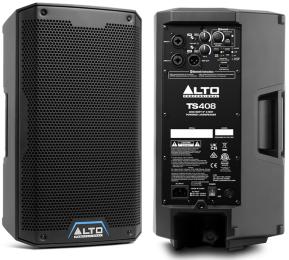
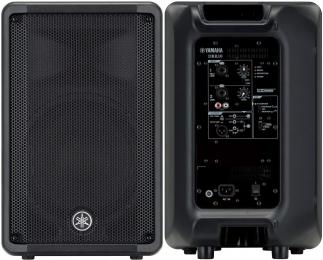
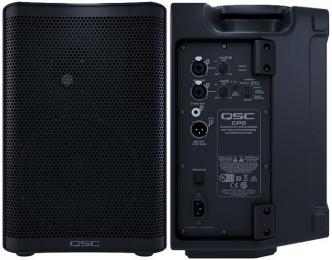
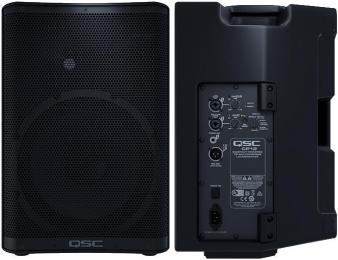
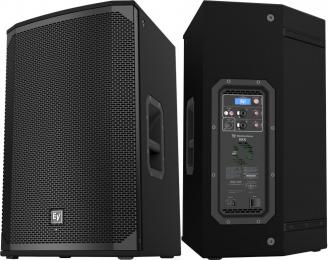
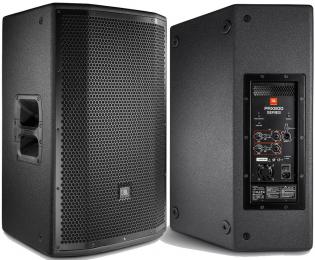
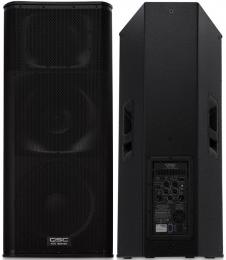
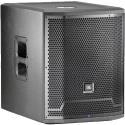
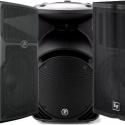
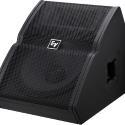
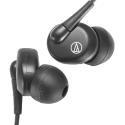
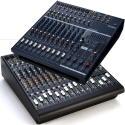
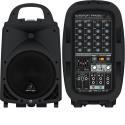
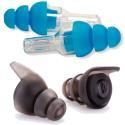
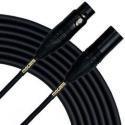
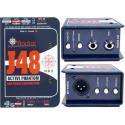
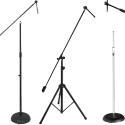
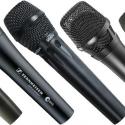
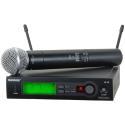
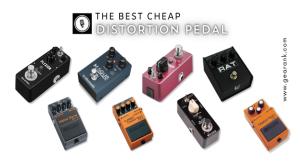
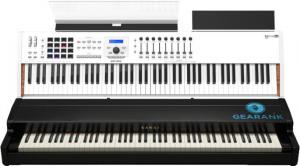
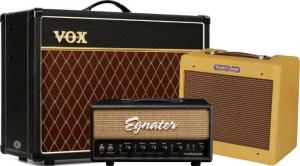
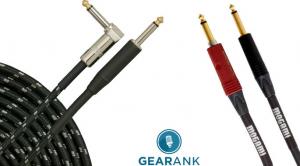
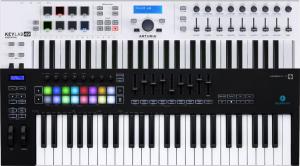
Comments
how would these speakers
Submitted by tom (not verified) on
How would these speakers compare to some old ev s200s in low end punch?
I haven't personally used the
Submitted by Jason Horton on
I haven't personally used the EV s200s, however they have 12" woofers so you'd expect any modern 15" speaker to have a stronger bottom end.
If you've never tried QSC,
Submitted by CarlMal (not verified) on
If you've never tried QSC, treat yourself. I rented a K12 as a keyboard monitor and my goodness, the bass that thing was capable of is amazing. I had to engage the hi-pass switch as the bass player was giving me dirty looks. And yes please, it would be great to know which sub would be a good match for K8/10s
How about doing a review on
Submitted by R. Glenn (not verified) on
How about doing a review on powered subs for ~$1,000
It has now been done - Guide
Submitted by Jason Horton on
It has now been done - Guide to The Best PA Subwoofers - Powered & Passive
A sub woofer guide is a good
Submitted by Jason Horton on
A subwoofer guide is a good idea - I'll add that to our list of topics to investigate.
Was RCF out of the price
Submitted by Brian (not verified) on
Was RCF out of the price range?
The RCF Art series are
Submitted by Jason Horton on
The RCF Art series are definitely within the price range, however they have limited availability in the US - you usually have to buy them on special order.
However they are widely available throughout Europe so if anyone would like more information about RCF powered speakers go to http://www.rcf.it/product-finder/active-speaker
No offense. RCF Art series is
Submitted by Mango (not verified) on
No offense. RCF Art series is garbage just like the JBL PRX. Sounds like radio amplified. Good that its not listed here. If you want noise then it is, not for music.
Clearly you haven't done any
Submitted by JOBLO (not verified) on
Clearly you haven't done any testing or comparisons the new series IIII 700 series sound very good and most italian companies make great speakers like FBT & DB youre talking through your hat.
You've clearly not heard RCF
Submitted by Beesuit (not verified) on
You've clearly not heard RCF's ART 745-A. It's easily one of the best loudspeakers in its price range. Actually, considering its price, it probably is the best bar none. With its huge 4" driver, there's little competition for it if small-mid range venues is your thing.
My band has been using both
Submitted by Adrian (not verified) on
My band has been using both EVs and JBLs for years now and they're both really good powered speakers. Why didn't you include JBL on your list?
JBLs Are not what they use to
Submitted by John Alfieri (not verified) on
JBLs Are not what they use to be. I had the PRX 735s and after several shows the inside housing on both cabs were rattling and buzzing. Very annoying. When I saw them open up the cabs. the parts were as cheap as could be. Even the tech was shocked. He suggested QSC 153s. I took the loss on the trade in and never looked back. The QSCs blow them away in sound quality and build quality. So I am not at all surprised the smaller QSC were on the top. The 153s are probably too $$$ for this list but would be at the top if that price range was being considered. Also the EVs have way too many complaints of breaking down as do Mackie. You RARELY see that on QSC reviews. Being in a working band Quality and reliability are everything. QSC tops the list IMO
Being a sound engineer, Jbl's
Submitted by david (not verified) on
Being a sound engineer, Jbl's used to use quality components back 20 years ago but what they are putting out now is not professional grade products. I have qsc153 they are a bit on the heavier side but in terms of professional sound reinforcement they cannot be beat! It comes down to what is your main concern when performing live, quality professional products or products that fit your budget. I prefer to wait when making a purchase but get a product that is top notch!
QSC rocks!
JBL has never been a good
Submitted by des preston (not verified) on
JBL has never been a good speaker EV beats them hands down are you deaf?
I listened to JBL and EV side
Submitted by Eric (not verified) on
I listened to JBL and EV side by side and chose the EV Live X series. EV beat JBL hands down.
Agreed. Anyone have any
Submitted by REG (not verified) on
Agreed. Anyone have any comments on the Turbosound ix15’s?
We have a rating for them -
Submitted by Jason Horton on
We have a rating for them - Current Turbosound iX15 Gearank Rating.
I build adamson speakers and
Submitted by Mike (not verified) on
I build Adamson speakers and they are great build with kevlar drivers great outside in all wether but you will pay.
would you help me compare the
Submitted by seleckta (not verified) on
Would you help me compare the two EV and JBL? What is the best choice in durability, audibility among others?
We have 4 JBLs and 4 EVs
Submitted by Jason Horton on
We have 4 JBLs and 4 EVs currently in our public database.
If you click on those links you'll see that the EVs generally have higher Gearank scores than the JBLs - this means people who have bought the EVs are more satisfied with their gear than the people who got the JBLs instead.
That's why we recommended the ZLX-12P & ZLX-15P EVs above but have not done so for the JBLs at this stage.
Thanks Jason
Submitted by seleckta (not verified) on
Thanks Jason
the Ev speakers seems to be much heavier in their performance would you pliz high lighten on the ratio of Amp to speakers in terms of there watts.
Thanks John - you were quite
Submitted by Jason Horton on
Thanks John - you were quite right that we were trying to stick to a price range, we didn't want go much over $1,000. If we had gone up to $1,500 the the QSC KW153 would have been in the list too.
We did take a look at several
Submitted by Jason Horton on
We did take a look at several JBL systems but none of the scored a high enough Gearank to be included in this gear guide.
Curious as to what was
Submitted by John Alfieri (not verified) on
Curious as to what was lacking in JBL. The PRX 800 series and I assume SRX series should be included. The PRX 835 head to head with QSC 153 are louder and not as harsh on the high end.
We make our recommendations
Submitted by Jason Horton on
We make our recommendations based on overall product ratings rather than by considering specific aspects or features (except for special picks like the Budget Option above) - you can see how we analyze reviews and opinions from around the web to produce our ratings in How Gearank Works.
We only go into the detail of which aspects are good or lacking for items we select to recommend, so unfortunately I can't give you specifics in this case other than to say that overall sentiment is less favorable for the ones we didn't recommend.
I'm disappointed with this
Submitted by Anonymous (not verified) on
I'm disappointed with this list. I'm surprised that Mackie's were cited as being "reliable." I had a pair of Thumps that were anything but reliable. I had to replace them after six months of use. JBLs are known for reliability, not Mackies.
The Gearank scores are based
Submitted by Jason Horton on
The Gearank scores are based upon customer feedback and expert reviews of the latest models.
Here are the JBLs we processed and none of them had enough positive feedback to score high enough to be included.
If you think there is a current JBL model we should process for a Gearank score to see if it should be included, then please let us know.
You tested the entry level
Submitted by Walt (not verified) on
You tested the entry level jbl gear.... how about srx etc?
Hi Walt - there are 2
Submitted by Jason Horton on
Hi Walt - there are 2 important points to make in response to your question:
To get a better handle on this please read How Gearank Works.
Clueless jbl are top of the
Submitted by Ben (not verified) on
Clueless jbl are top of the list think your survey is a bit wrong
I had a pair of PRX615's the
Submitted by JOBLO (not verified) on
I had a pair of PRX615's the bass was good the horn was crap so that's probably why they didn't get a mention a lot JBL speakers have a funny midrange and top end most DJ's don't notice this but put one up against something like the RCF 700 series and the FBT VENTIS/PROMAXX and you'll notice the difference.
I have had JBL PRX625 now for
Submitted by Christian Che (not verified) on
I have had JBL PRX625 now for almost four years and they are really good, never had problems with them. Just bought Bose F1 system two months ago and had two sub woofer rattling. JBL deserve to be on this list.
The JBL PRX625 speakers are
Submitted by Jason Horton on
The JBL PRX625 speakers are no longer available to buy from most of the major North American retailers which is why this specific model was not included.
BTW - although JBL didn't score high enough to be included in this guide, they topped the ratings in our guide to the Best PA Subwoofers.
Pages